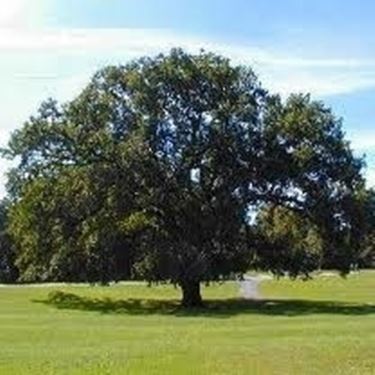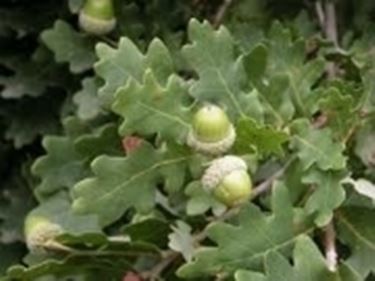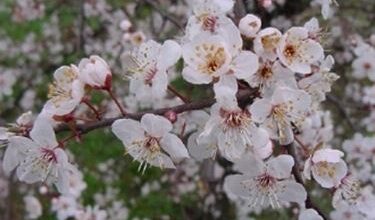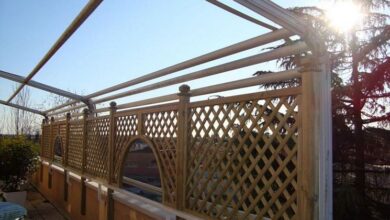Generality
The English oak is a large oak (Quercus robur), given that under favorable conditions it reaches 50 m in height with a trunk diameter of 2 m. However, it is usually around 35m high. Exceeds 500 years of life. The trunk is robust, branched when there is space, in large branches. The foliage is wide and not too dense, with the lower branches bearing horizontal. The bark is first smooth and gray, then after the age of 20 it forms deep longitudinal furrows and shallower horizontal grooves. The twigs of the year are gray-brown, smooth and shiny. The leaves are deciduous, obovate-oblong, narrower at the base, with 5-7 broad lobes and rounded sinuses and two characteristic unequal lobes near the petiole (orecchiette). The foliar consistency is herbaceous, more leathery at the end of the season. Flowering occurs at the same time as foliation, from the end of April to May, with male flowers gathered in catkins with 10-12 yellowish perianth flowers. The female flowers, on the other hand, are carried to the axil of the leaves in the apical part of the twigs. They are gathered in spikes of 2-5 elements, and have 3 reddish stigmas surrounded by oval bracts. Pollination is anemophilous but there are still no documented certainties on the allergenicity of its pollen. The fructification of the Farnia starts from 30 years of life or even later in woodland habitat (70 years). The fruit is an elongated and smooth acorn, 2-3.5 cm long, brown when ripe (October) with darker longitudinal streaks and a dome that covers it for about a third of its length. The root system is initially taproot, then gradually the increasingly predominant and robust lateral roots appear. The rhizosphere at maturity is expanded, but more superficial than in other oaks, which is not strange given that the Farnia lives in places with a superficial water table, and in these conditions a too deep root system could suffer asphyxiation. The English oak has a considerable morphological variability due also to the ease with which it hybridizes in nature (usually with oak and downy oak, but not only). There are two subspecies naturally present in Italy, one is the one described so far, the other differs from this one because its leaves are initially pubescent with narrower breasts, and the acorns have the largest dome (brutia subspecies). The English oak has a considerable morphological variability due also to the ease with which it hybridizes in nature (usually with oak and downy oak, but not only). There are two subspecies naturally present in Italy, one is the one described so far, the other differs from this one because its leaves are initially pubescent with narrower breasts, and the acorns have the largest dome (brutia subspecies). The English oak has a considerable morphological variability due also to the ease with which it hybridizes in nature (usually with oak and downy oak, but not only). There are two subspecies naturally present in Italy, one is the one described so far, the other differs from this one because its leaves are initially pubescent with narrower breasts, and the acorns have the largest dome (brutia subspecies).

Climate and terrain

In Italy it is present throughout the peninsula with the exception of Puglia, Sicily. The brutia subspecies is present in Campania and Calabria. Even if now the Farnia has been supplanted by agricultural crops, and the oak woods have been considerably reduced, this oak would be the main component of the great lowland forests (the “Silva lupanica” of the ancient Romans). The ideal climate includes hot but not dry summers and harsh winters, a good availability of water throughout the year (under penalty of drying of branches and formation of epicormic branches from the trunk and main branches), and a very bright exposure. except in the very first few years of development. It prefers deep soils with superficial aquifer, fresh and rich in humus, neither too acidic nor too alkaline.
Plant and cultivation techniques
Where it is possible to use it, sowing is to be preferred since the taproot of the young plant is quite long. The acorn germinates immediately, therefore it should be sown at a depth of 4-5 cm on well-worked soil as soon as it reaches maturity (September-October). The seedlings are planted at 1 or 2 years of age. Transplants, on the other hand, do not take root well if they are already highly developed. Cultivation for commercial purposes takes a shift of 80-100 years, given the slow growth of the plant. Farming pruning is carried out only to obtain more commercially useful trunks, otherwise the plant must be left undisturbed.
Parasites and diseases
Among the parasites of oaks in general and therefore also of the English oak we remember various lepidoptera including Lymantria dispar and Thaumetopoea processionaea which cause serious defoliation and can be contrasted with biological control through antagonistic or predatory species (tits). We also remember Cerambix cerdo that digs tunnels in the wood, the leaf mosaic virus, the powdery mildew caused by the ascomycete Microsphaera alphitoides and various other fungal diseases. Farnia is also a victim of the «oak wasting syndrome», a disorder now widespread all over the world and still not well understood, which manifests itself with yellowing of the foliage, microfillia, epicormic branches, decrease in vital mycorrhizae at the roots, exudations from the cracks of the bark.







